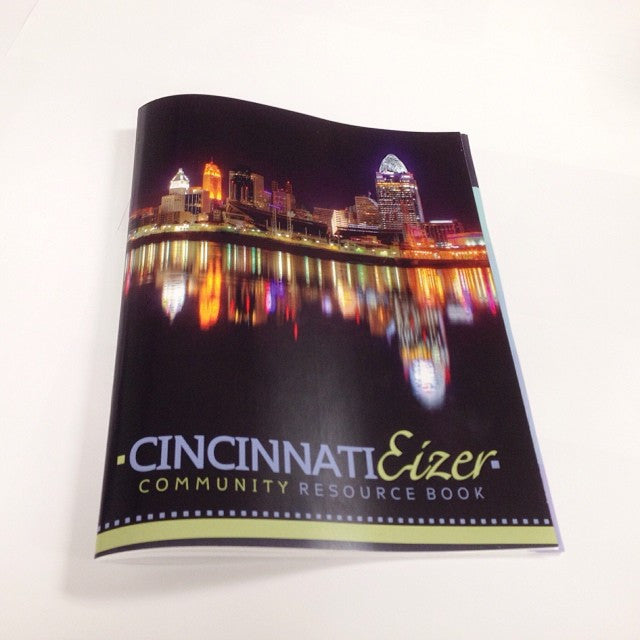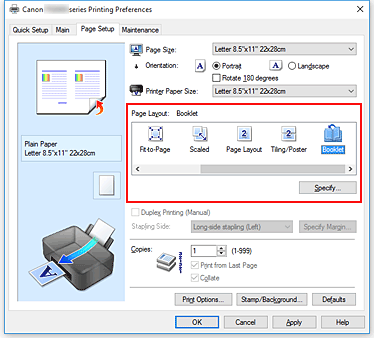Maximizing ROI with Multi-Purpose Booklet Printing Designs
Maximizing ROI with Multi-Purpose Booklet Printing Designs
Blog Article
The Essential Overview to Comprehending Brochure Printing Options and Techniques
The process of brochure printing involves numerous factors to consider that can considerably impact the final item. From selecting the proper format and size to comprehending the subtleties of binding techniques, each selection plays a necessary function. Additionally, factors such as paper supply and printing methods further affect the efficiency of the pamphlet. As one browses these choices, it becomes crucial to comprehend just how they interconnect and what that means for the total result.
Understanding Brochure Sizes and styles
When considering booklet printing, recognizing the different layouts and sizes readily available is necessary for attaining the desired discussion. Booklets can be created in numerous layouts, including saddle-stitched, spiral-bound, and perfect-bound, each offering distinctive advantages. Typical dimensions range from basic letter (8.5 x 11 inches) to smaller sized choices like A5 (5.8 x 8.3 inches), allowing for adaptability based upon material and target audience.Selecting the suitable dimension can influence both the layout and viewers interaction. Larger dimensions could suit aesthetically driven material, while smaller sized layouts might be a lot more straightforward and portable. In addition, the variety of pages influences the option of binding method, as thicker brochures might require sturdier bindings. Eventually, understanding these elements permits for an extra tailored strategy, guaranteeing that the end product straightens with the intended message and aesthetic, improving the overall effectiveness of the interaction.
Picking the Right Paper Stock

Binding Approaches: Options and Factors To Consider
When it pertains to binding methods for brochures, numerous alternatives are offered, each with unique advantages. Saddle stitch binding offers an economical option for thinner pamphlets, while best binding strategies give a more polished search for thicker publications. Wire-O binding attracts attention for its resilience and simplicity of use, making it ideal for records that require flexibility.
Saddle Stitch Binding
Saddle stitch binding offers a sensible and cost-efficient option for putting together pamphlets, making it a prominent choice amongst organizations and authors. This binding approach includes folding sheets of paper in half and stapling them along the fold line, producing a cool and orderly look. Generally suitable for booklets with a reduced page matter, saddle sewing is perfect for publications, pamphlets, and educational materials. The simpleness of this method permits quick manufacturing and is typically favored for short runs or advertising things. Nonetheless, it is necessary to keep in mind that saddle stitch binding may not appropriate for thicker booklets, as the back may not hold up under raised weight. In general, it stays a reliable option for lots of printing tasks.
Perfect Binding Strategies
Perfect binding is a widely used method that supplies a refined and professional surface to booklets and magazines. This technique includes gluing the web pages with each other at the spinal column making use of a solid adhesive, enabling a tidy side and the capacity to hold a bigger number of web pages contrasted to saddle stitching. Perfect binding is specifically suitable for thicker booklets, such as directories and yearly reports, where a tough, flat spinal column is wanted. Additionally, it uses the option for a printed cover that can be created to enhance visual allure. However, considerations such as web page matter, paper weight, and the intended use the pamphlet should be thought about, as they can influence sturdiness and total high quality.
Wire-O Binding Options
Wire-O binding, understood for its toughness and adaptability, supplies an excellent option for booklets that require easy page turning and a professional appearance. This binding approach uses a series of steel loopholes that hold pages securely, allowing them to exist level when open. It is especially suitable for discussions, handbooks, and catalogs as a result of its durable nature. Wire-O binding is readily available in numerous colors and diameters, accommodating different page matters and densities. Additionally, it allows the addition of covers and tabs, enhancing the booklet's total visual. Considerations for Wire-O binding include the selection of cord color, the size of the loopholes, and the level of customization wanted, every one of which can profoundly affect the last product's look and capability.
Digital vs. Offset Printing: Which Is Best for You?
When choosing a printing method for brochures, comprehending the distinctions in between digital and offset printing is essential. Digital printing makes use of contemporary technology to produce top quality prints promptly and cost effectively, making it suitable for short runs or tasks requiring fast turnaround times. It enables for modification, giving the ability to print on-demand with minimal waste.In comparison, offset printing is a conventional technique that succeeds in producing big quantities with consistent high quality. It entails transferring ink from a plate to a rubber covering, after that to the paper, which leads to precise details and vibrant colors. Nevertheless, counter printing normally calls for longer setup times and is extra cost-effective for bigger volumes.Ultimately, the selection between electronic and offset printing relies on project demands, spending plan, and official source desired quantity. For little, time-sensitive jobs, electronic may be the most effective choice, while offset may be more suitable for larger, top quality productions.

Creating Your Pamphlet: Tips and Ideal Practices
When making a pamphlet, cautious interest to format, typeface option, and color use can greatly boost its efficiency. A well-structured format overviews the visitor's eye, while suitable fonts guarantee readability and share the desired tone. Additionally, reliable use of color can evoke feelings and highlight essential info, making the total layout more impactful.
Selecting the Right Format
Just how can one efficiently select the ideal design for a booklet? It is crucial to examine the brochure's purpose and target audience. A tidy, organized design enhances readability and engagement. Making use of a grid system can help in straightening aspects consistently, producing a professional look. Additionally, integrating aesthetic pecking order via varying dimensions and placements of pictures and message can direct the viewers's eye and emphasize crucial details. It is additionally vital to leave adequate white area, which stops overcrowding and enables for better focus. Lastly, examining different designs through mock-ups can supply understanding into how the style executes in real-world scenarios, making sure that the end product satisfies both visual and useful requirements.
Picking Appropriate Fonts
An appropriate typeface can substantially improve the total style of a pamphlet, matching the design and strengthening the material's message. The option of font styles ought to think about readability, specifically for body message, as it guarantees the information comes to all readers. Sans-serif fonts are frequently liked for digital formats, while serif fonts can lend a conventional feeling in published materials. It's recommended to limit font choices to 2 or three to keep aesthetic coherence. Additionally, font dimension plays an important role; headings should be not overwhelming yet distinctive, while body message ought to fit for analysis. When choosing fonts, alignment with the booklet's style and target market is necessary for efficient communication and aesthetic appeal.
Effective Use Color
Shade works as a powerful device in booklet layout, shaping assumptions and directing visitor feelings. It can evoke feelings of calmness, trust, or enjoyment, relying on the shades selected. Designers need to consider color concept concepts, ensuring that the chosen scheme lines up with the booklet's message and target market. For instance, using cozy colors like red and orange can produce necessity, while cooler tones like green and blue foster tranquility.Additionally, comparison plays a crucial function; corresponding colors can improve readability and visual charm. Uniformity in shade usage across pages even more reinforces brand name identification and communication. Inevitably, reliable shade execution not just records focus yet additionally enhances the brochure's function, making it a vital element of effective layout.
Ending Up Touches: Coatings and Unique Impacts
While numerous think about the material and design of a booklet the most critical components, the completing touches, such as coverings and special results, play a crucial function in improving its overall charm. Coatings can provide defense and durability, making certain that the booklet endures wear and tear. Matte coatings use an advanced, non-reflective surface, while shiny layers can make shades appear even more attractive and vibrant. Unique impacts, like embossing or foil marking, add a responsive dimension that can create a remarkable impact. These strategies can highlight certain areas, attracting attention to important details or developing aesthetic rate of interest. Furthermore, UV finishing can supply a high-shine coating that boosts the general look.Together, these completing touches not only enhance the pamphlet's check out this site visual however additionally interact professionalism and reliability and focus to detail, eventually leaving a lasting effect on the reader.
Expense Factors To Consider for Booklet Printing
Comprehending the numerous price factors to consider for brochure printing is crucial for companies and companies aiming to maximize their budgets. Secret variables influencing costs include the selection of paper, binding, and ink techniques. Greater top quality products, such as premium paper or specialized inks, usually increase the general expenditure. In addition, the size and web page count of the booklet play a substantial role; larger booklets need more resources and time to produce.Another crucial factor to consider is the printing technique, whether digital or offset, as each has its own pricing framework and suitability for different quantities. Organizations must also consider layout expenses, which can vary based upon intricacy and the use of specialist solutions. Eventually, shipping and handling costs can contribute to the overall, specifically for big orders. By reviewing these components, organizations can make enlightened decisions that align with their monetary abilities while attaining the desired high quality in their published products.
Regularly Asked Questions
What Are the Ecological Impacts of Brochure Printing?
The ecological effects of brochure printing consist of deforestation from paper production, carbon exhausts from transport, and waste generation from disposed of materials - Booklet Printing. Lasting methods, such as utilizing recycled paper and eco-friendly inks, can minimize these results
Exactly How Can I Ensure Shade Precision in My Pamphlet?
To guarantee shade accuracy in a booklet, one need to use calibrated monitors, employ professional shade profiles, conduct examination prints, and select high-quality printing solutions that use color matching and proofing choices for best outcomes.
What Is the Common Turnaround Time for Brochure Printing?
The why not look here normal turnaround time for booklet printing differs depending on the intricacy and amount - Booklet Printing. Usually, it ranges from a couple of days to two weeks, affected by factors such as publishing techniques and finishing needs
Are There Minimum Order Quantities for Brochure Printing?

Can I Print Brochures in Numerous Languages?
Publishing booklets in multiple languages is possible. Numerous printing services use choices for multilingual or multilingual layouts, permitting efficient communication. Careful planning guarantees that create components accommodate various languages without jeopardizing readability or looks. In addition, variables such as paper stock and printing methods additional affect the performance of the booklet. When taking into consideration booklet printing, comprehending the various formats and sizes offered is crucial for attaining the wanted discussion. When choosing a printing approach for pamphlets, recognizing the distinctions between digital and counter printing is crucial. Additionally, the dimension and web page matter of the brochure play a significant role; bigger brochures need even more sources and time to produce.Another essential consideration is the printing strategy, whether electronic or balanced out, as each has its very own prices structure and viability for different quantities. The ecological effects of booklet printing consist of logging from paper production, carbon exhausts from transportation, and waste generation from discarded products.
Report this page